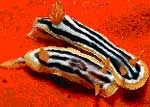Scientists have identified the oldest sex chromosomes on Earth – at least 248 million years old – found in the body of a mysterious creature.
For the earliest animals in the world, the environment they experience in their early life often determines which sex they will mature into. It was several hundred million years ago that sex chromosomes emerged as a significant evolutionary leap.

The octopus may be the first species in the world to possess sex chromosomes – (Photo: internet)
Sex chromosomes allow animals to have a predefined sex from the moment of conception. These chromosomes are now the standard for mammals, including humans.
Previously, scientists believed that a set of genes determining sex existed on Earth only about 180 million years ago, a record attributed to the sturgeon species.
In a study recently published online on BioArXiv, a research team led by Dr. Andrew Kern from the University of Oregon (USA) discovered the existence of sex chromosomes that are much older: at least 248 million years and possibly up to 455 million years.
These were found in a species that many biologists have long been skeptical of, often referring to it as a “hybrid of extraterrestrial beings“ due to its sudden mysterious entry into the evolutionary tree of Earth’s organisms.
A paper published in Progress in Biophysics and Molecular Biology in 2018 argued that some alien species may have arrived on Earth via asteroids hundreds of millions of years ago, leading to interplanetary crossbreeding with existing species.
As a result, their descendants exhibited enhanced evolutionary and intellectual levels compared to their contemporaries.
This species is the octopus, and potentially its close relatives – the squids.
It all began with a study in 2015 when Dr. Kern and his colleagues sequenced the complete genome of a female California two-spot octopus (Octopus bimaculoides).
They quickly realized that its chromosome 17 appeared to be different, seemingly containing fewer genes than other chromosomes.
Meanwhile, a previously sequenced male specimen had a very normal chromosome 17 compared to other chromosomes.
The researchers sought answers by studying 2 male octopuses and 2 other octopuses, discovering that females only had 1 copy of chromosome number 17, while males had 2.
Thus, instead of the XY and XX combinations that determine male and female sexes in humans, the ZZ or Z0 “lonely” pair determines whether it is a male or female octopus.
Sequencing work continued with 3 other octopus species, 3 squid species, and nautilus. The results indicated that only the nautilus did not possess such a chromosome pair.
From this, scientists estimated that sex chromosomes appeared in the evolutionary timeline of Earth’s animals about 248-455 million years ago.





















































